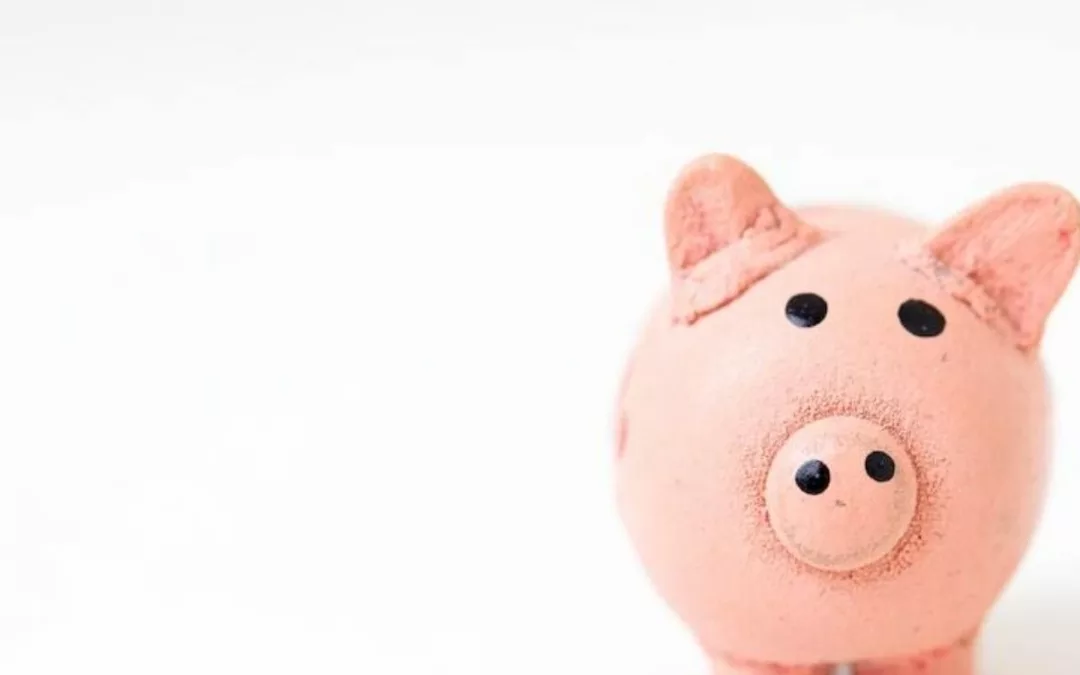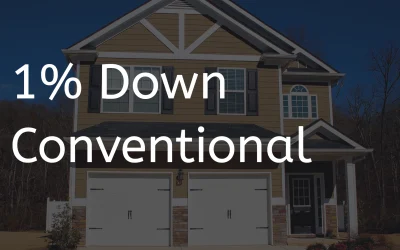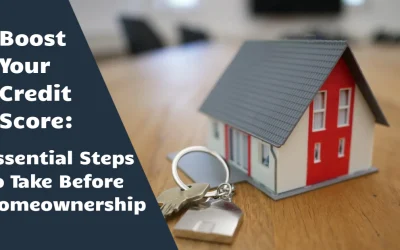Buying your first home is a big step in life and can be a little overwhelming. You’ve been dreaming of owning your own home for years, but now it’s time to make it a reality. One of the most important aspects of buying a home is budgeting. Without careful planning and budgeting, you could quickly find yourself in over your head with mortgage payments and other expenses. In this post, we’ll guide you through the process of creating a budget for your first home. From understanding the costs involved to tips on saving money and sticking to your budget, we’ve got you covered. With our help, you can make your dream of homeownership a reality without breaking the bank.
1. Why Budgeting is Critical for Buying Your First Home
Budgeting is a critical step in buying your first home. You’ll need to save for a down payment, closing costs, and other expenses associated with homeownership. By creating a budget, you’ll be able to determine how much you can afford to spend on a home and avoid overspending.
When creating a budget, it’s important to consider all of your expenses, including your current rent or mortgage payment, utilities, groceries, transportation costs, and any other debts you have. Once you have a clear understanding of your current expenses, you can determine how much you can realistically afford to spend on a home.
It’s also important to consider the additional costs associated with homeownership, such as property taxes, home insurance, and maintenance and repair costs. These expenses can add up quickly, so it’s important to factor them into your budget.
By creating a budget and sticking to it, you’ll be able to save for your down payment and other expenses associated with buying a home. This will not only make the home-buying process smoother, but it will also set you up for success as a homeowner by ensuring that you can comfortably afford your new home.
2. The first step: Determine how much you can afford
When it comes to buying your first home, it is crucial to determine how much you can afford to spend. Owning a home is a long-term investment, and it is important to make sure that you don’t stretch yourself too thin financially, especially if you are a first-time home buyer.
To start, take a look at your monthly income and expenses. This will give you a good idea of how much you can realistically afford to spend on your mortgage payment. Remember to factor in other expenses like utilities, property taxes, and home insurance, which can add up quickly.
It’s also important to consider your down payment. Generally, a higher down payment will result in lower monthly mortgage payments.
Once you have a good idea of your budget, it’s time to start looking for homes that fit within your price range. By doing your due diligence early on, you can avoid the disappointment of falling in love with a home that is outside of your budget. Instead, you can focus on finding a home that you love and can comfortably afford.
3. How to calculate your monthly mortgage payments
Once you have established how much you can afford to spend on your first home, it’s important to calculate your monthly mortgage payments. This will give you a clear idea of how much you will be spending on your home each month and will help you to budget accordingly.
To calculate your monthly mortgage payments, you will need to consider a few key factors. First, you will need to determine the amount of your loan. This is the total amount of money you will be borrowing from a lender to purchase your home.
Next, you will need to consider the interest rate on your loan. This is the percentage of your loan that you will be paying in interest each year. The interest rate on your loan will depend on a variety of factors, including your credit score, the size of your down payment, and current market conditions.
Finally, you will need to consider the length of your loan. Most mortgages are structured as either 15-year or 30-year loans, although other options may be available depending on your lender.
Once you have determined these factors, you can use an online mortgage calculator to estimate your monthly mortgage payments. This will give you a rough idea of how much you can expect to pay each month for your home. A great calculator to use is OmahaMortgageCalculator.com
Keep in mind that your monthly mortgage payments will also include property taxes, homeowner’s insurance, and possibly private mortgage insurance (PMI) if your down payment is less than 20% of the purchase price. Be sure to factor in these additional costs when calculating your monthly expenses.
4. Additional costs to consider when buying a home
Buying a home is a big investment, and it is important to consider all the additional costs. When creating your budget, be sure to account for closing costs, which can include fees for the home appraisal, title search, and legal fees. Closing costs typically range from 2-5% of the home’s purchase price.
Another cost to consider is property taxes. Property taxes can vary by location and can significantly impact your monthly mortgage payment. Be sure to research the property taxes in the area where you are looking to buy a home.
Homeowners insurance is another expense to consider. This insurance protects your home and possessions in case of damage or theft. The cost of homeowners insurance can vary based on the location and value of the home.
You should also consider the cost of maintenance and repairs. As a homeowner, you are responsible for the upkeep of your home. This can include regular maintenance tasks such as lawn care, cleaning gutters, and replacing air filters. Additionally, unexpected repairs can arise, such as a leaky roof or a malfunctioning HVAC system. It is important to budget for these expenses to ensure you can keep your home in good condition.
In summary, when budgeting for your first home, it is important to consider all the additional costs associated with homeownership. This includes closing costs, property taxes, homeowners insurance, and maintenance and repairs. By accounting for these costs in your budget, you can ensure that you are financially prepared for homeownership.
5. Saving for a down payment
Saving for a down payment is one of the biggest hurdles for first-time homebuyers. The down payment is the amount of money that you need to pay upfront to secure the purchase of your new home. Different programs require different downpayment amounts. It is important to figure out the best program for your situation, and then determine the amount of downpayment.
One strategy is to set up a separate savings account specifically for your down payment. This account should be separate from your regular checking and savings accounts. This way, you can keep track of your progress and ensure that you’re not dipping into your down payment savings for other expenses.
Another strategy is to automate your savings. Set up a direct deposit from your paycheck into your down payment savings account. You can also set up automatic transfers from your checking account to your savings account on a regular basis. By automating your savings, you’ll be less likely to spend the money on other things.
Finally, consider making some lifestyle changes to help you save money faster. This could mean cutting back on eating out, canceling subscriptions you don’t use, or even downsizing to a smaller apartment. Every little bit counts when you’re saving for a down payment, and with dedication and hard work, you can reach your goal of homeownership.
6. Tips for maximizing your savings while still enjoying life
Saving for a down payment on a house can be daunting, but it doesn’t mean you have to sacrifice all of your social life. Here are some tips to help maximize your savings while still enjoying life:
1. Cut back on unnecessary expenses: Take a look at your monthly expenses and see where you can cut back. This could include eating out less, canceling subscription services you don’t use, or finding more affordable ways to entertain yourself.
2. Set a budget: Create a budget for yourself and stick to it. This will help you track your spending and ensure you are putting enough money towards your down payment each month.
3. Find ways to increase your income: Consider picking up a part-time job or finding ways to earn extra income on the side. This could include selling items you no longer need, freelancing, or renting out a spare room on Airbnb.
4. Use cashback apps: There are many cashback apps available that can help you save money on your everyday purchases. This extra money can then be put towards your down payment.
5. Look for deals: When you do need to make a purchase, always look for deals and discounts. This could include shopping during sales or using coupons.
By implementing these tips, you can still enjoy your life while also working towards your goal of buying your first home.
7. How to create a budget for your home purchase
Creating a budget for your home purchase is an essential step that will help you to stay on track and avoid overspending. The first thing you need to do is determine how much you can afford to spend on a home. This will depend on various factors, including your income, expenses, and other financial obligations.
Start by listing out all your monthly expenses, including rent, car payments, utility bills, and any other debts you may have. Then, subtract these expenses from your monthly income. The figure that remains is what you have left to put towards your mortgage payments.
It’s important to remember that owning a home comes with other expenses that you may not have considered before. For example, you’ll need to pay for property taxes, home insurance, and possibly homeowner association fees. You’ll also need to factor in maintenance and repair costs.
Once you have a good understanding of your finances, you can start looking for homes that fit your budget. Keep in mind that you don’t have to spend the full amount you’re approved for by a lender. It’s better to purchase a home that you can comfortably afford and still have money left over for emergencies or unexpected expenses.
In conclusion, creating a budget for your home purchase is a crucial step in the home-buying process. By taking the time to evaluate your finances and determine what you can afford, you’ll be able to find a home that fits your needs and your budget.
8. Sticking to your budget and avoiding common pitfalls
When it comes to sticking to your budget and avoiding common pitfalls, there are several things to keep in mind. First, make sure to stay focused on your goals and don’t get sidetracked by temptations like expensive furniture or home decor. While it’s important to create a comfortable living space, it’s equally important to stay within your financial means.
Another common pitfall is underestimating the costs associated with owning a home. Be sure to consider all the expenses involved, from mortgage payments to property taxes, utilities, and maintenance. It’s a good idea to create a detailed budget that takes into account all of these costs, so you can stay on track and avoid any surprises.
Finally, make sure to plan for unexpected expenses. This could include repairs or other unforeseen expenses that can arise when you own a home. Having an emergency fund set aside can help you deal with these unexpected costs without derailing your budget.
By staying focused on your goals, planning for all the costs involved, and setting aside funds for unexpected expenses, you can stick to your budget and make your dream of owning a home a reality.
9. The importance of factoring in ongoing homeownership expenses
When budgeting for your first home, it’s important to not only consider the upfront costs such as the down payment and closing costs but also the ongoing expenses associated with homeownership. These expenses can add up quickly and can be a shock to new homeowners who are not prepared.
One of the most significant ongoing expenses is the mortgage payment. This is likely to be your largest monthly expense, and it’s important to factor this into your budget. You need to ensure that you can comfortably afford the monthly mortgage payment, as well as any additional costs such as property taxes, homeowner’s insurance, and private mortgage insurance (PMI) if required.
Another ongoing expense to consider is maintenance and repairs. Your new home may require regular maintenance, such as lawn care or cleaning gutters, and you may also need to factor in repairs such as fixing a leaking roof or replacing a broken appliance. It’s a good idea to set aside a portion of your budget each month to cover these costs, so you’re not caught off guard when something needs fixing.
Utilities are another ongoing expense that can quickly add up. You’ll need to budget for electricity, gas, water, internet, and cable bills, and it’s important to keep in mind that these costs can fluctuate depending on the season and your usage. You can also consider ways to reduce your utility bills, such as installing energy-efficient appliances and light bulbs, or investing in solar panels.
Finally, don’t forget to factor in any HOA (Homeowner Association) fees or other community fees if applicable. These can vary greatly depending on your location and the amenities provided, so it’s important to research these costs before making an offer on a home.
By factoring in all of these ongoing expenses, you can create a realistic budget for your first home and avoid any unpleasant surprises down the road.
10. Conclusion: You can make your dream home a reality with careful planning and budgeting.
In conclusion, buying a home is a big step that requires careful planning and budgeting. While it may seem daunting at first, with the right approach and mindset, you can make your dream home a reality.
Start by determining your budget and sticking to it. Research the market and find a home that meets your needs and budget. Consider getting pre-approved for a mortgage to make the buying process smoother.
Don’t forget to factor in additional costs such as closing fees, property taxes, and homeowner’s insurance. Create a contingency fund for unexpected expenses that may arise during the home-buying process or after you move in.
Remember that buying a home is a long-term investment, so it’s important to consider your future plans and financial goals. Keep in mind that your dream home may not be perfect, but with some effort and creativity, you can make it your own.
By following these tips and staying focused on your budget, you can turn your dream home into a reality. So go ahead, start planning, and take the first step towards homeownership today!
Congratulations! You are now equipped with the knowledge to make your dream home a reality. Budgeting for your first home can seem like a daunting task, but with the tips provided in this article, you’ll be well on your way to achieving your goal. Remember to take your time, do your research, and be realistic about what you can afford. We hope that the information provided in this article will be useful in helping you create a budget and make your dream of owning a home a reality. Happy house hunting!
Breaking Barriers: A Revolutionary Loan Option for First-Time Homebuyers
Unlocking Homeownership: The 1% Down Mortgage Revolution In today's challenging real estate market, many aspiring homeowners find themselves trapped between the dream of owning a home and the financial hurdles of traditional down payments. However, a groundbreaking...
Boost Your Credit Score: Essential Steps to Take Before Homeownership
Embarking on the journey to homeownership is an exciting milestone, but before you can unlock the door to your dream home, you need to ensure your financial foundation is solid. One of the most crucial elements in this process is your credit score. Your credit score...
Trigger Leads 101: What They Are and How to Make Them Stop
A trigger lead is a type of marketing lead sold by credit bureaus to lenders and mortgage companies. When someone applies for a mortgage and their credit report is pulled, it can act as a "trigger" for the credit bureaus to sell that consumer’s information as a lead...




